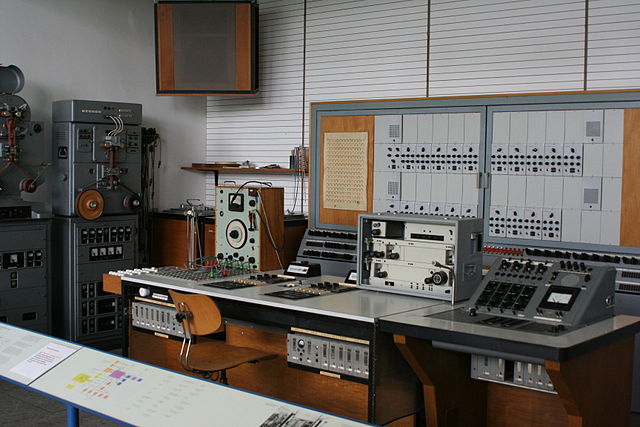Popular Recording devices Manufacturers for reference
Popular Recording devices Manufacturers for reference
There are five types of recording devices to choose from are
2-track recorder,
Recorder–mixer,
Separate multitrack recorder and mixer,
Computer,
Keyboard Workstation.

Flash recorders
Some Popular Flash recorders
Sony PCM-D1 and D50
Korg MR-1 and MR-1000 (korg.com),
TASCAM DR-1 and TASCAM HD-P2
DIGITAL MULTI TRACKER (RECORDER–MIXER)
Other names for this device are stand-alone Digital Audio Workstation (DAW), portable digital studio, or personal digital studio.
Digital multitrackers are
Boss,
Korg,
SEPARATE MULTITRACK RECORDER AND MIXER
Ideal for on-location recording, a multitrack hard-disk recorder (HD Recorder) records up to 24 tracks reliably on a built-in hard drive, just like the hard drive in your computer.
Some examples are the
Alesis ADAT HD24XR,
TASCAM MX-2424
TASCAM X-48,
Otari DR-100,
iZ Technology RADAR,
Fostex D-2424LV,
Mackie HDR 24/96
A mixer is an electronic device with several mic preamplifiers, volume and tone control for each mic, monitor volume controls, and outputs for effects devices. To use it, plug mics and electric instruments into the mixer, which amplifies their signals. Connect the output signal of each mic preamp to a multitrack recorder. While recording, use the mixer to send those signals to the desired recorder tracks, and to set recording levels. During mixdown, the mixer combines (mixes) the tracks to stereo.
Mixers are made by such companies like
And many others.
COMPUTER DIGITAL AUDIO WORKSTATION (DAW)
This low-cost recording setup has three parts: a personal computer, an audio interface, and recording software. Some software records MIDI data (explained later) as well as audio. The audio interface converts audio from your mics, mic preamps, or mixer into a signal that is recorded on the computer’s hard drive as a magnetic pattern. Dozens of tracks can be recorded with professional quality. You mix the tracks with a mouse by adjusting the “virtual” controls that appear on your computer screen. Then you record the mix on your computer’s hard drive.
Software examples include
Steinberg Cubase and Nuendo,
Sony Vegas and Sound Forge,
Magix Samplitude and Sequoia,
Reaper;
RML Labs SAW Studio,
Adobe Audition, and
MOTU Digital Performer (Mac only).
Free multitrack recording programs are available for download. Although they lack extensive features, they offer a chance to practice your skills at no cost. Examples are
Audacity ( http://audacity.sourceforge.net),
Kristal (from Kreative.org), and
Garage Band (supplied free with any new Macintosh computer or $79 with a Mac software upgrade).
Related to recording software is music creation software, which comes with samples of musical instruments. You set up loops (repeating drum riffs and musical patterns), play along with them using a MIDI keyboard, and record that MIDI sequence. Examples include
Sony ACID Pro, and
Some makers of sound cards include
Echo,
Event,
Frontier Design,
M-Audio,
RME,
Lynx, and
E-MU.
USB and FireWire Audio interface manufacturers include
MOTU,
TC Electronic,
E-MU,
And many others.
Another type of audio interface is a mixer that connects to a computer by a FireWire or USB port. It sends the output signal of each mic preamp to a separate track in your recording software and returns the stereo mix back to the mixer for monitoring. This can be a good system for recording a band because it offers easy setup of monitor mixes with effects. Some examples are
Mackie Onyx 1640 with the optional Onyx FireWire Card (16 recording channels),
Alesis Multimix USB or FireWire series (up to 8 recording channels),
Edirol M-16DX (16 recording channels, 4 mic inputs), and
Behringer Xenyx 2442FX (4 recording channels)
A few microphones have USB built in, so you just plug the mic directly into your computer’s USB port. Examples are
MXL USB.009, 990 USB, and 990 USB stereo mics.
KEYBOARD WORKSTATION
Here’s another device to record music. This is a synthesizer/sampler with a piano-style keyboard and a built-in sequencer (MIDI recorder) and effects. Examples include
Alesis Fusion,
Promega 2 and Andromeda;
Korg K2600X;
Juno-G and GW-7.
The workstation lets you create a tune with several instrument sounds. Then you record the audio from the keyboard into a computer. If you want to add a vocal, use MIDI/audio recording software. An arranger keyboard workstation automatically creates backing tracks (drums, bass, and chords) by following your left hand’s notes and right-hand’s melodies. Examples include
Yamaha Tyros2 and PSR-S900.
A similar device is a beatbox or groove box, which is a sample player with pads that you tap to generate sounds and grooves. It lets you assemble a stereo music track from drum and synth samples. Copy the music from the beatbox into your computer and add vocals.
Examples include
Akai MPC series and MPD24,
Roland sampling workstations,
Zoom RT-223 and
Streetboxx SB-246,
Further detail information regarding how to set-up and other technical aspects you can follow this book:
Practical Recording Techniques,
The Step-by-Step Approach to Professional Audio Recording
By Bruce Bartlett, Jenny Bartlett
Also, Check for book Index and a preview of this awesome book with following links or
